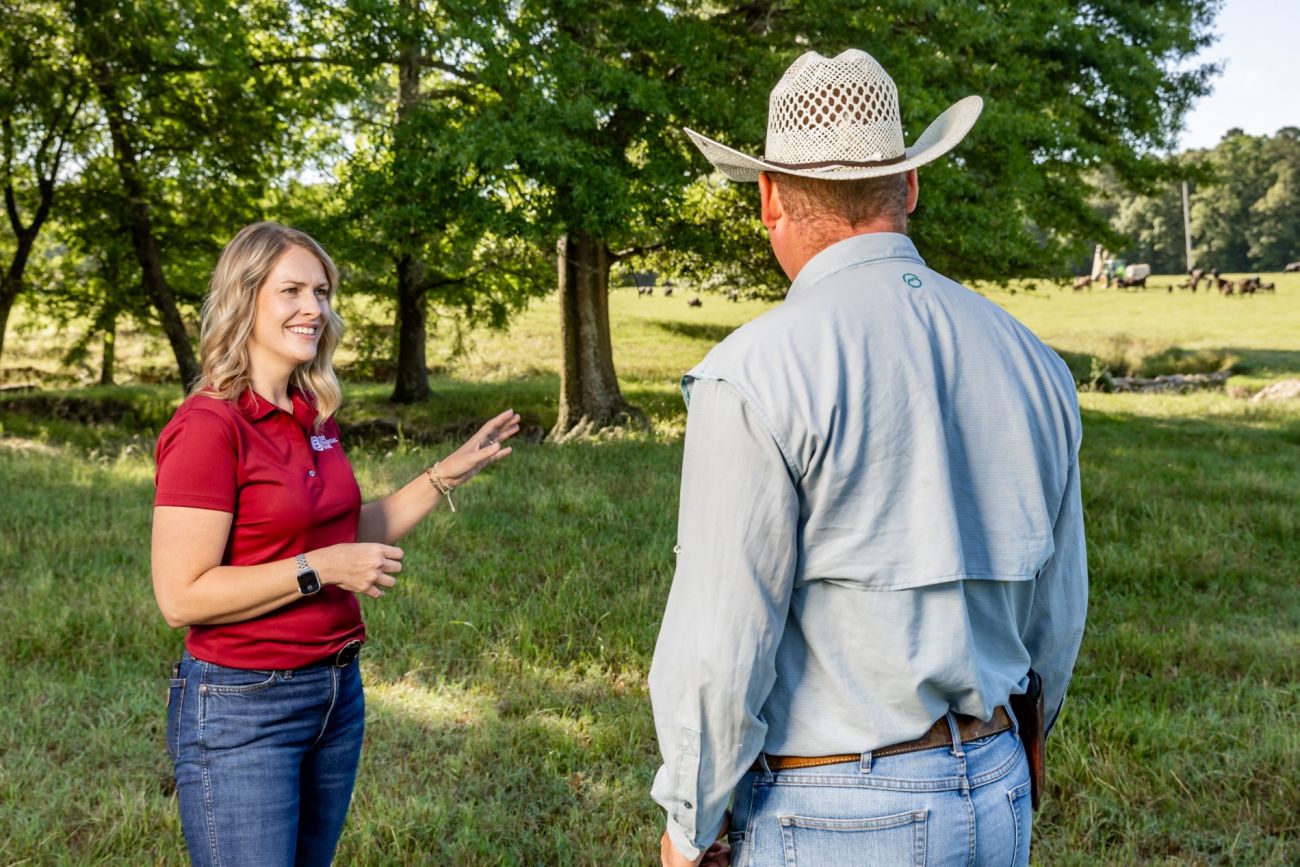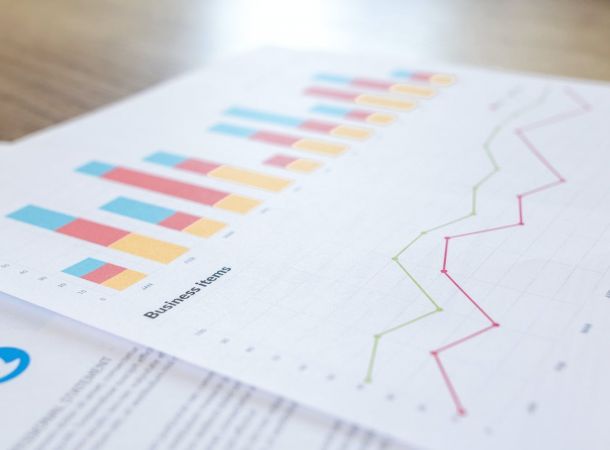Ag Lending Collateral: What’s Needed to Secure a Farm Loan

First Financial Bank
When it comes to Ag loans, what’s collateral, and why does it matter to lenders? It’s all about security and reducing risk.
For someone starting out in farming, an Ag loan can be essential to funding their plans, and collateral is typically part of the process. Many borrowers have some idea what this is, but may have specific questions or need clarification. Bridget Roberts, a Loan Officer for First Financial Bank’s Farm and Ranch Division, has provided some details to help.
What is “collateral”?
A typical definition is “Collateral is a valuable asset that a borrower pledges as security for a loan.” In other words, in exchange for funds to purchase or refinance, the borrower offers an asset or assets to the bank to offset the risk against the loan not being repaid. Collateral is the way banks mitigate risk and secure a loan transaction.
Ultimately, banks are simply accounting for their risk of not getting repaid. Requiring the borrower to “have some skin in the game” with either collateral or a down payment is how they ensure that, should the loan not be paid, they can collect the amount still due. Repaying loans as agreed allows the bank to take those funds and lend them back out, keeping the economic cycle going and supporting the industry. “The focus is on both your business and ours being successful,” states Bridget.
What types of collateral do lenders prefer?
Collateral can include real estate, equipment, livestock, crops, or other assets with a market value. “Land is a great, widely accepted option, if available. But it’s not the only one. Throughout my career, I have tried to match the purpose of the loan to the repayment structure and the type of collateral required. For instance, an operating loan may have the annual crop and/or livestock as collateral, supported by additional collateral to lessen risk,” according to Bridget.
“In my current role at the Farm and Ranch Division, we mainly focus on real estate transactions, so land is often used as the collateral for the purchase of the farm,” says Bridget. “Equipment and livestock are common collateral for other types of farm and ranch loans. Livestock can be used to secure annual operating loans or loans to purchase additional livestock. Equipment loans are typically secured by the equipment being acquired and potentially supported by additional equipment already in place to reduce the amount of down payment required.”
Other types of assets with a market value may also be used as collateral. “The most creative form of collateral I have seen used was silver coins held in a bank vault,” says Bridget. “
Every industry has items unique to its production that might be appropriate for collateral. For example, wine barrels, solar panels, cattle buildings with a composting floor, and land rollers are all industry-specific items that may seem ‘creative’ or unusual to those outside your industry. Still, they may be a useful asset for collateral for your loan.”

How are assets valued and what is the relation to down payment?
Every lender has its own internal guidelines regarding asset valuations and how much can be applied as collateral for a loan. The standard is a percentage of market value and will be assessed by an independent assessor hired by the lender as part of the loan process. The percentages applied vary by collateral type:
- Machinery: 50-75% of the market value.
- Crop inventory is typically 75-80% of market value or 90-95% if the crop is sold on contract.
- Farmland can differ as well. Most lenders are lending 50-75% of the market value for real estate. Some may go as high as 80%.
The only issue that might arise would be offering collateral that has a shorter useful life than the loan being requested. An example of this would be requesting a 10-year loan to purchase 5-year-old cows. The cows purchased will unlikely be producing income at the 10-year mark.
How does collateral value apply to the down payment? There is an inverse relationship between the down payment amount and collateral needed. So, the higher the down payment, the less collateral needed – and vice versa. According to Bridget, “If you don’t have a lot of physical assets but still need financing, there can still be ways to make it work. One option is to save enough to be able to put a cash down payment. The other option is to use FSA or an FSA preferred lender to get a guaranteed loan. This will allow you to get the financing you need with less collateral than you would need otherwise. Since First Financial Bank is a preferred lender by the USDA Farm Service Agency (FSA), we have options available to offer an even lower down payment requirement. There are options utilizing FSA programs, such as the 5-45-50 program, allowing a borrower only to have a 5% down payment with FSA and a bank to finance the remaining real estate purchase. One factor to keep in mind, most lenders are going to offer a better interest rate when a larger down payment is available.
What happens if the value of the collateral changes?
As the value of collateral gets lower, the overall loan-to-value percentage will increase. This is depreciation, an expected occurrence, and the payment will usually outpace the depreciation. If there is a long-term relationship between the lender and borrower, the lender typically adjusts the depreciable assets on the balance sheet annually to account for this. Land prices can create a different scenario. “Everyone in agriculture either remembers or has heard of stories of the 1980s when rapidly decreasing land prices,” says Bridget. “Since that time, most lenders have required at least a 20% down payment and typically won’t fund without some type of guarantee in place. This down payment requirement offers a cushion to protect against the risk that land prices will fall enough for the borrower to be upside down.”
How is a long-time family farm valued as collateral?
Many farms have been in a family for generations. As the next generation is making plans to become farm owners, the question of using the existing family farm for collateral invariably arises. The most significant difference is how the family feels about using the farm as collateral. From the bank’s perspective, as long as the borrower has proper authorization to use the farm as collateral, can provide a clean title, and the value supports the loan request, the time of ownership really doesn’t play a factor. From the farmer’s perspective, it can be hard to offer the “family farm that grandpa’s grandpa started” as collateral to purchase additional land or refinance existing debt. Farmers sometimes have a sentimental attachment to that original farmstead that is especially difficult to overcome.
“We understand. We are family farmers and ranchers ourselves and respect your feelings. Let’s talk. We can help you look at your options to allow you to make an informed decision about what to use as collateral,” says Bridget
Want to chat about an Ag loan? What type of collateral makes sense for you?

What Kinds of Software Do Farmers Need?
The more you can reduce the guesswork, the more profitable your farm may be. That’s where agricultural software comes in.

How to Get Your Loan Decision Faster
Have you ever applied for a loan and only have it sit on your lender’s desk for days without an answer?

Well Prepared Financials Reflect Good Management Skills
Good production numbers are great, but management skills are a must in today’s environment of tight margins and the endless pressures from third parties.

